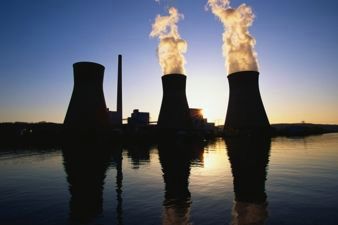Nairobi / Geneva – Communities in developing countries are facing increasing health and environmental risks linked to exposure to mercury, according to new studies by the United Nations Environment Programme (UNEP).
Parts of Africa, Asia and South America could see increasing emissions of mercury into the environment, due mainly to the use of the toxic element in small-scale gold mining, and through the burning of coal for electricity generation.

The “Global Mercury Assessment 2013” states that emissions of the toxic metal from artisanal gold mining are significantly greater than were reported in 2008. Rising gold prices are driving greater small-mining activity, but new and improved reporting has also provided more accurate estimates of emissions from the sector.
Due to rapid industrialization, Asia is the largest regional emitter of mercury, and accounts for just under half of all global releases.
The UNEP study assesses for the first time at a global level releases of mercury into rivers and lakes. The report says an estimated 260 tonnes of mercury – previously held in soils – are being released into rivers and lakes.
Much human exposure to mercury is through the consumption of contaminated fish, making aquatic environments the critical link to human health.
In the past 100 years, man-made emissions have caused the amount of mercury in the top 100 metres of the world’s oceans to double. Concentrations in deeper waters have increased by up to 25 per cent.
The study, which provides a comprehensive break-down of mercury emissions by region and economic sector, also highlights significant releases into the environment linked to contaminated sites and deforestation.
The report says an estimated 260 tonnes of mercury – previously held in soils – are being released into rivers and lakes.
Along with a parallel UNEP publication “Mercury: Time to Act”, the new assessment will be formally presented at the International Negotiating Committee on Mercury (INC5), to be held in Geneva on 13-18 January 2013. Governments attending the major conference are aiming to conclude discussions on a global legally binding treaty to minimize risks to people and the environment from exposure to mercury.
This would reduce cases of neurological and behavioural disorders, and other health problems linked to mercury, as well as the contamination of soils and rivers caused by man-made emissions of the metal.
Governments gave the green light to negotiations towards a global treaty back in 2009 at the UNEP Governing Council held in Nairobi, Kenya.
“Mercury, which exists in various forms, remains a major global, regional and national challenge in terms of threats to human health and the environment,” said United Nations Under-Secretary-General and UNEP Executive Director Achim Steiner.
“In 2009 at the UNEP Governing Council, nations agreed to launch negotiations for a legally binding treaty aimed at bringing down releases from sources such as industry and mining, address mercury-containing products, and tackle historical pollution sites-the final negotiations begin in just a few days’ time,” he added.
“Mercury has been known as a toxin and a hazard for centuries – but today, we have many of the alternative technologies and processes needed to reduce the risks for tens of millions of people, including pregnant mothers and their babies. A good outcome can also assist in a more sustainable future for generations to come,” said Mr. Steiner.
Mercury released from industry and other man-made sources can circulate in the environment for up to centuries at a time. This means that it is likely to be several years or decades before reductions in mercury emissions have a demonstrable effect on mercury levels in nature and the food chain.
The UNEP studies say this reinforces the need for swift action by governments, industry and civil society to strengthen efforts to reduce mercury emissions and releases. Delays in action, say the reports, will lead to slower recovery of ecosystems and a greater legacy of pollution.
Rising levels of mercury present in the Arctic are also highlighted. An estimated 200 tonnes of mercury are deposited in the Arctic each year, generally far from where it originated. Studies have shown a ten-fold increase in levels of mercury in certain Arctic wildlife species in the past 150 years, due mainly, it is thought, to human activity.
Global Trends in Mercury Emissions and their Impacts
The UNEP reports state that global emissions of mercury have remained relatively stable in the last twenty years, with 2010 emissions from human activities thought to be just under 2,000 tonnes.
Despite improved availability of data on mercury, the emissions estimate is still subject to uncertainty, and covers a range of 1010 to 4070 tonnes.
Along with coal burning, the use of mercury to separate metal from ore in small-scale gold mining remains the chief source of emissions worldwide. Annual emissions from small-scale gold mining are estimated at 727 tonnes, or 35 per cent of the global total.
Greater exposure to mercury poses a direct threat to the health of some 10-15 million people who are directly involved in small-scale gold mining, mainly in Africa, Asia and South America. An estimated 3 million women and children work in the industry.
Mercury-free methods and other low-cost solutions for reducing emissions during gold extraction are available, but socio-economic conditions, and low awareness of the risks of mercury, are barriers to adopting safer techniques.


















